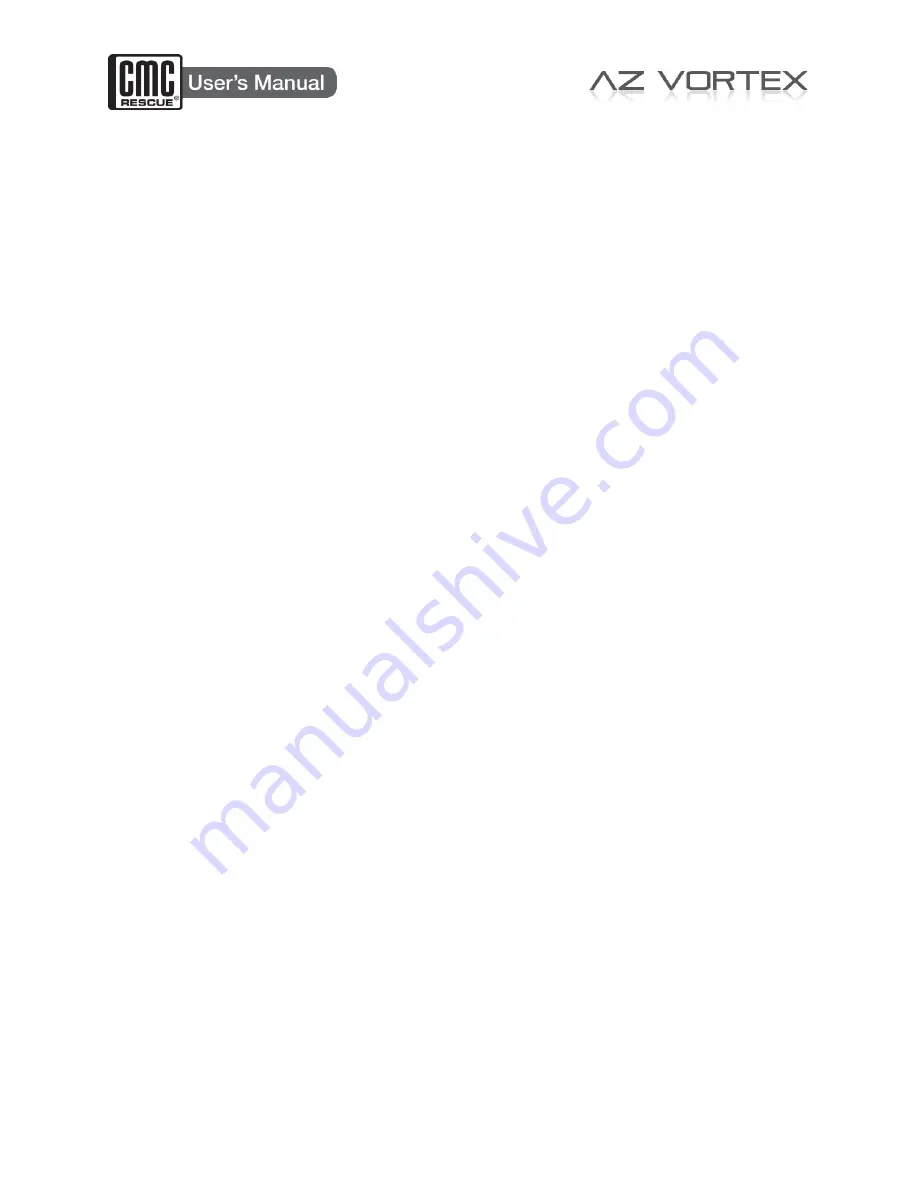
CMC Rescue, Inc.
|
A Z VORTEX User’s Manual
15
CARE AND MAINTENANCE
User Information shall be provided to the user of the product. Industry equipment standards
recommend separating the user information from the equipment and retaining it in permanent
record. The standard also recommends making a copy of the user information to keep with the
equipment and that the information should be referred to before and after each use.
Additional information regarding life-safety equipment can be found in NFPA 1500,
Standard
on Fire Department Occupational Safety and Health Programs
, and NFPA 1983,
Standard on
Life Safety Rope and Equipment for Emergency Services
.
Inspection
Inspect the AZ VORTEX according to your department's policy for inspecting life-safety
equipment. Equipment should be inspected after each use by an inspector that meets your
department's training standard for inspection of life-safety equipment. Record the date of the
inspection and the results in the equipment log. Each user should be trained in equipment
inspection and should do a cursory inspection before each use.
Inspect the AZ VORTEX for cracks, dents, or elongation of the carabiner and pin holes. The
head unit should rotate easily but not feel loose. The legs should fit together smoothly and
should not appear bent or deformed. Pins should have the retaining ball present and function
smoothly. If any significant damage is observed, the equipment should be removed from
service.
If the AZ VORTEX is dropped or impact loaded, it should be inspected by a qualified
inspector prior to being returned to service. In most cases, a visual inspection will not be able to
determine if the equipment has been damaged. Based on the history of the incident, if there is
any doubt regarding the safety of the equipment, it should be removed from service and retired.
Product Lifetime
It is impossible to give a definite lifetime for life safety equipment. While
carefully used gear may last a long time, one extreme or improper use could require that it be
retired. Cracks, corrosion, deformation, wear, failure to properly function, major falls, any doubt
as to prior usage or condition all require that the equipment be retired and destroyed. In addition
to inspections before and during use, a competent person must conduct a detailed inspection
every 12 months at a minimum. A record should be kept of the date, person performing the
inspection and results, as well as the date of first use, name of users and any other pertinent
information necessary to keep accurate track of the equipment’s usage history.
Carrying, Maintenance and Storage
During use, carrying, and storage, keep away from acids, alkalis, exhaust emissions, rust
and strong chemicals. Do not expose to flame or high temperatures.
If the equipment becomes soiled, it can be washed in soap and water. For decontamination,
the equipment may be cleaned per your department’s protocols on biohazards. Make sure the
parts are dry before storage and store in a dry location. Dot not store with dissimilar metals.




































